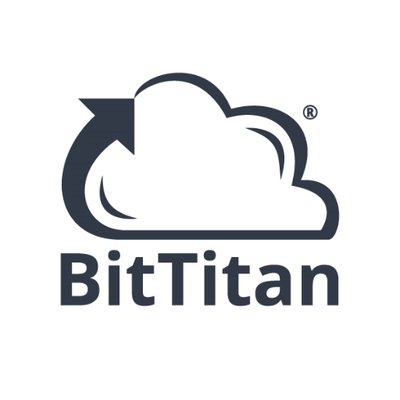Why you can trust us407 Cloud Software Products and Services Tested3056 Annual Software Speed Tests2400 plus Hours Usability TestingOur team of experts thoroughly test each service, evaluating it for features, usability, security, value for money and more. Learn more about how we conduct our testing.
Key Takeaways:
<h2>Zero Trust Security Architecture Explained</h2>
<p>Zero trust security is based on the principle of ânever trust, always verify.â Due to the advent of the internet of things (IOT) and remote work, itâs a necessity in modern corporate networks, where multiple device types may be remotely connected to the network. A zero trust cybersecurity strategy relies on strong authentication methods to provide secure access to corporate data. Zero trust security solutions must also implement network segmentation. In other words, no user should be able to access the entire corporate network, and they should only have access to data needed to perform their role. This makes gaining access to the whole corporate network much more difficult, as an attacker can only access a portion of the network, even if they were to gain access to an employeeâs account.</p>
<h2>Todayâs online threat landscape is far more dangerous than ever</h2>
<p>especially with companiesâ recent reliance on remote work. Yet many organizations still rely on traditional network and data management models. Zero trust security is a modern method of managing employee access to sensitive data, and itâs going to be the topic of discussion for this guide. Older models, such as the popular castle-and-moat security framework, work by allowing only verified users and devices to access company data. Unfortunately, these models often fail to protect data from internal threats, as they presuppose that all employees can be trusted. In contrast, a zero trust framework minimizes risks to the security of company data by restricting user access to the bare minimum their role requires. Our security experts here at Cloudwards are firm believers in the zero trust model, so much so that we implement it ourselves to manage our companyâs data. This article will explain the concept of zero trust security and outline its implementation based on our hands-on experience in network security. Weâll also link to academic sources along the way for further reading.</p>
<h2>What Is Zero Trust Architecture?</h2>
<p>The zero trust security strategy relies on the principles of least privilege access and network segmentation. This means that if an employee doesnât need access to certain files to do their job, they wonât be able to access them. They might even be operating within a contained data silo, with no way to access other parts of the network without explicit consent from an administrator. Zero trust security is a network security paradigm that assigns the least access possible to each user. The zero trust security framework assumes that no employee can be trusted with sensitive company data and that they should only be able to access the resources they need to perform their job. This way, even if an employeeâs account gets hacked, the attacker will only be able to access the project said employee is working on. In techy terms, it prevents a hacker from moving laterally across the network. This approach also helps to minimize the risk of internal data leaks. According to our cybersecurity statistics, 36% of data breaches came from internal actors for companies with over 1,000 workers, while that number rises to a whopping 44% for smaller companies. This is why itâs crucial that you never assume that anyone can be trusted with full network access.</p>
<h2>The 5 Zero Trust Pillars</h2>
<p>The classic model of zero trust network architecture is based on the five zero trust principles, or pillars. These pillars are identity verification, device security, network and environment, data security, and applications and workload. You might find these listed under different names, but the core principles remain the same.</p>
<h3>1. Identity Verification</h3>
<p>Identity verification involves authenticating the identities of each person attempting to access company data. The first and most important pillar is identity verification: A company must always know its employees and verify that itâs actually them attempting to access the network. Implementing strong user identity verification methods, like multi-factor verification (or two-factor authentication), is a must to validate users. This is doubly true for privileged accounts that can access more sensitive data.</p>
<h3>2. Device Security</h3>
<p>All devices accessing company data must be secured, even if theyâre on trusted networks. A compromised device on a company network can be disastrous, which is why the organization must restrict access to remote devices, especially non-company mobile devices. According to a paper published in the Information Systems Frontiers journal, ultra-fast 5G networks will create a future internet of things (FIOT) that will push remote work even further, necessitating increased device security.</p>
<h3>3. Network & Environment</h3>
<p>Network security and segmentation is a key principle of zero trust architecture. The security of a network is at the core of zero trust architecture. Controlling the network perimeter is paramount to its security, and properly segmenting a network is crucial for implementing zero trust.</p>
<h3>4. Data Security</h3>
<p>All data in a zero trust system is considered a critical asset. Data is among a companyâs most critical assets, and as such, protecting the data itself, regardless of where itâs stored or its network location, is the main purpose of zero trust. This includes classifying data by sensitivity, encrypting it and ensuring proper access control.</p>
<h3>5. Applications & Workload</h3>
<p>A company must ensure that all applications used by its employees are secure. Application and workload security is the final zero trust pillar. Applications must be developed with security in mind, and a thorough zero trust assessment must include proper vetting of applications used by employees to ensure your data doesnât fall prey to a vulnerability in an application. As an example, in 2023, Samsung suffered a data breach that leaked important source code due to an employee using ChatGPT. If a proper zero trust strategy had been implemented, including continuously monitoring data access and securing applications and workloads, this could have been prevented.</p>
<h2>How to Implement a Zero Trust Strategy</h2>
<p>Zero trust implementation is a bit more complicated than older network security strategies, but there are applications and services that can do the job for you, including EFSS services like Egnyte Connect. According to the book Zero Trust Security: An Enterprise Guide, every zero trust system consists of several distributed subsystems with their own policies, as well as a central policy decision point (an administrator). This is a simplistic overview of the system, but it goes a long way toward demystifying it. The steps below will help you implement your own zero trust strategy.</p>
<h3>Visualization:</h3>
<p>The first thing you need to do is decide what data each employee should access. Risk judgment, trust assessment and access management are the three most important aspects that you need to take into consideration.For example, if your company is split into teams working on different projects, you might want to separate each team into their own data silo, and then separate each role within the teams. You can even go so far as to reduce access to individuals who have very narrow roles, such as contractors, who donât need access to any company data beyond their work files.</p>
<h3>Mitigation:</h3>
<p>If you have suffered a threat, itâs imperative to detect it and mitigate the damage as soon as possible. Setting up detection systems is the first step towards future prevention, but you should also learn from previous breaches to see how you can better optimize your structures.</p>
<h3>Optimization:</h3>
<p>Once the damage from a breach has been mitigated, or a vulnerability has been discovered, you need to figure out how to prevent such a breach in the future. For example, if there was a weak spot that affected a particular data silo, consider changing that siloâs structure and implementing proper network segmentation and access control.</p>
<h2>NIST Guidelines on Zero Trust Architecture</h2>
<p>The National Institute of Standards and Technology expands these three points to seven key tenets in its NIST 800-207 standard. All data is considered a critical asset. All communication must be secure, even if itâs within a trusted network. Access to data should be restricted by session. Access policies should be dynamic and respond to shifting environmental factors. The company must continuously monitor and assess the security of all its assets. Access to data should be dynamic, with…</p>
Source link





















